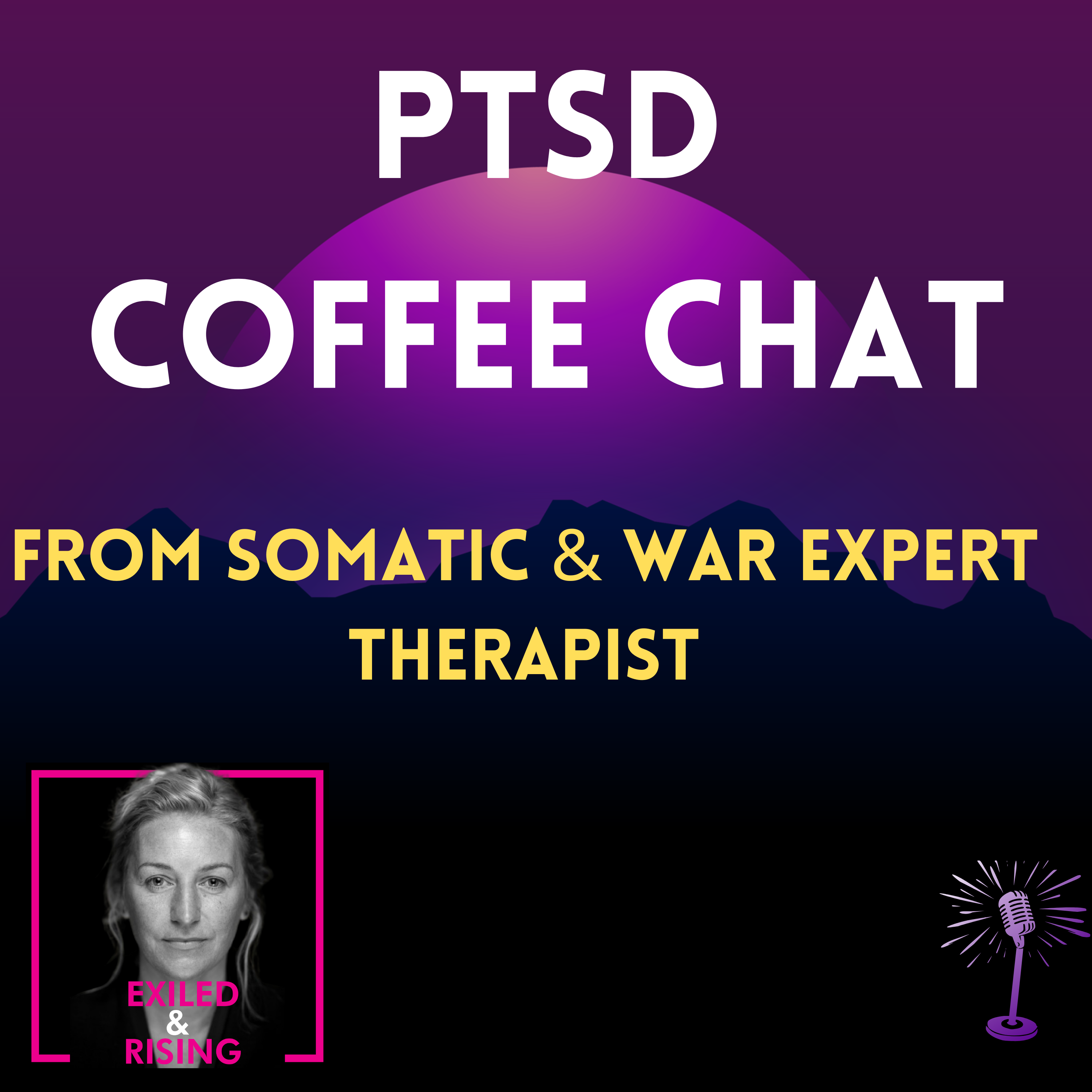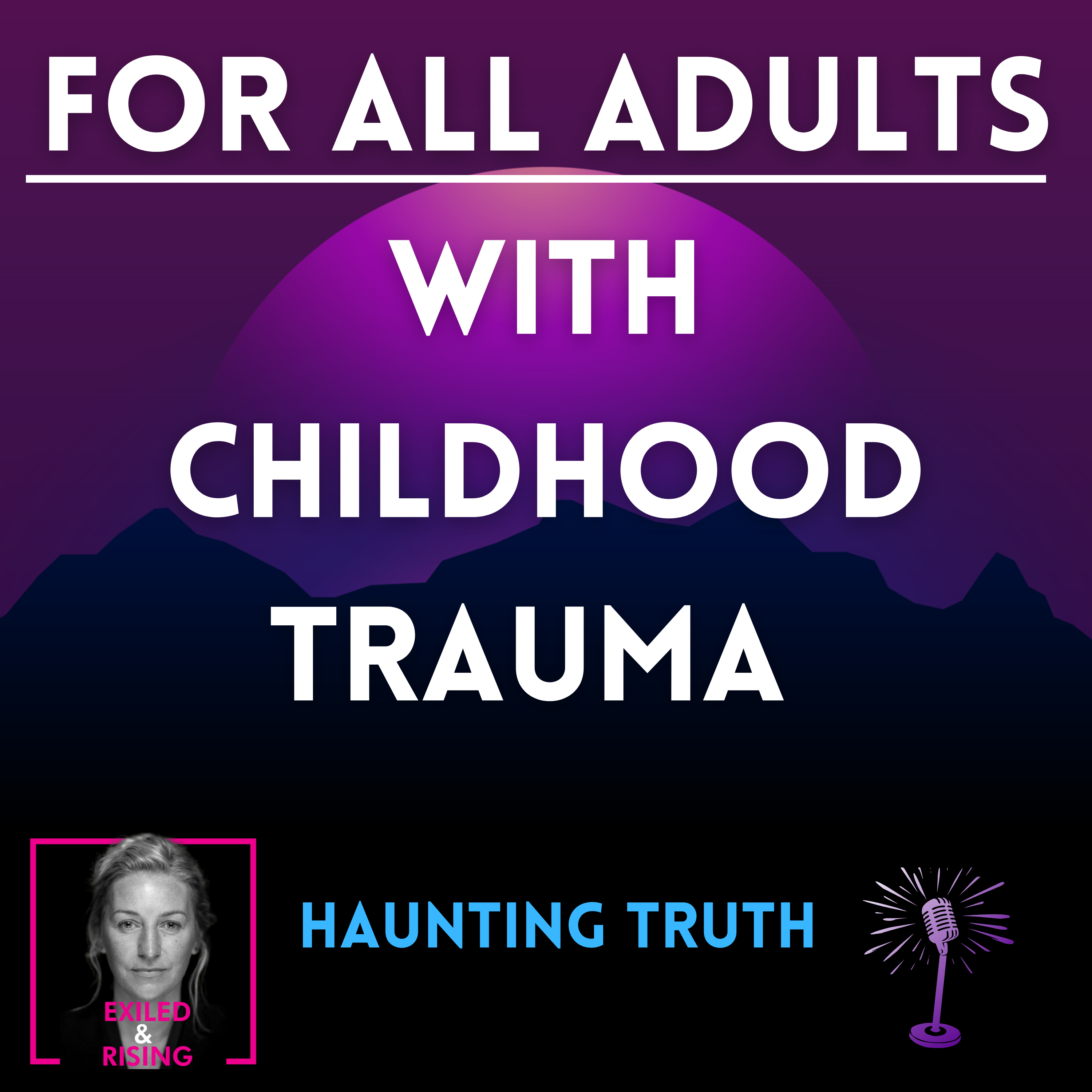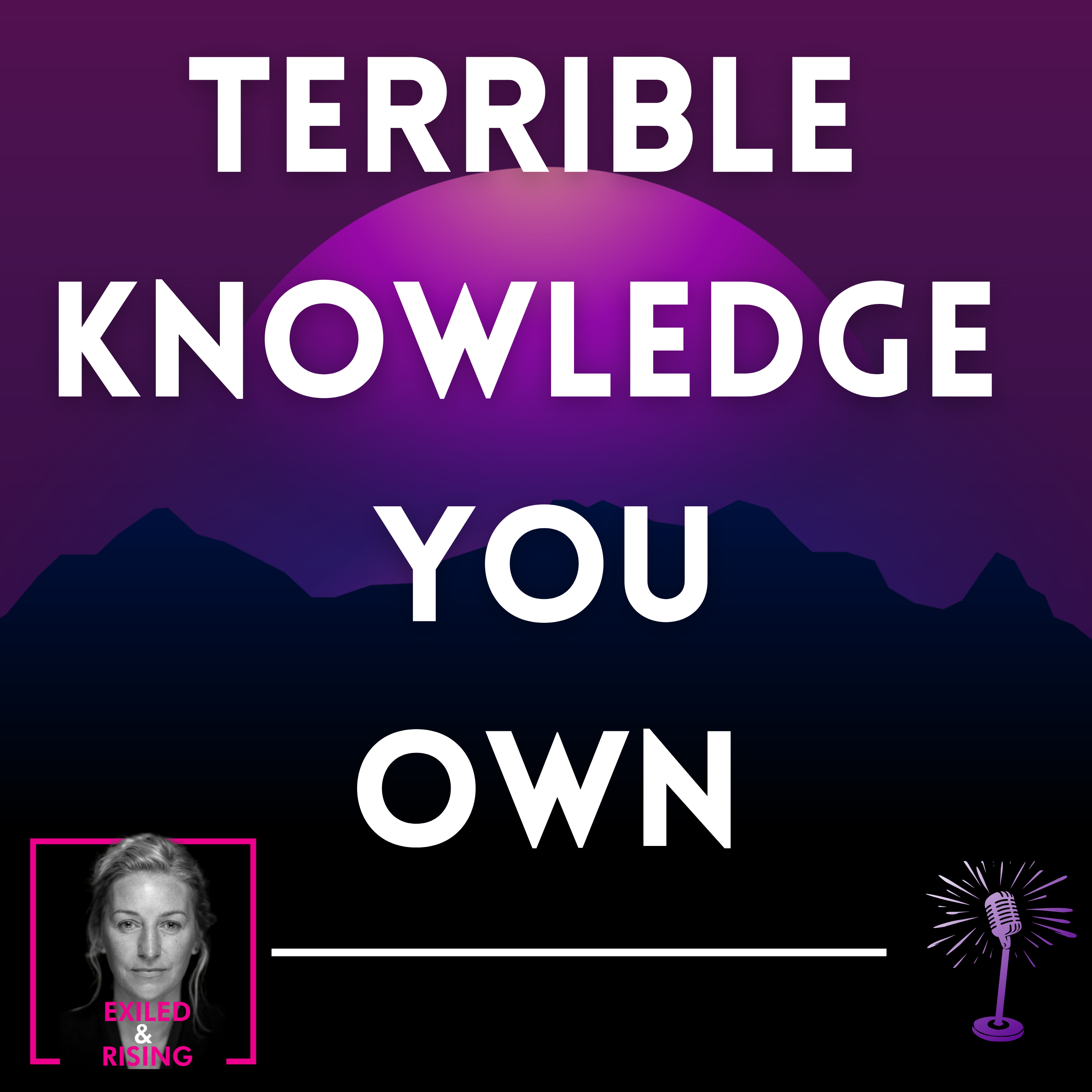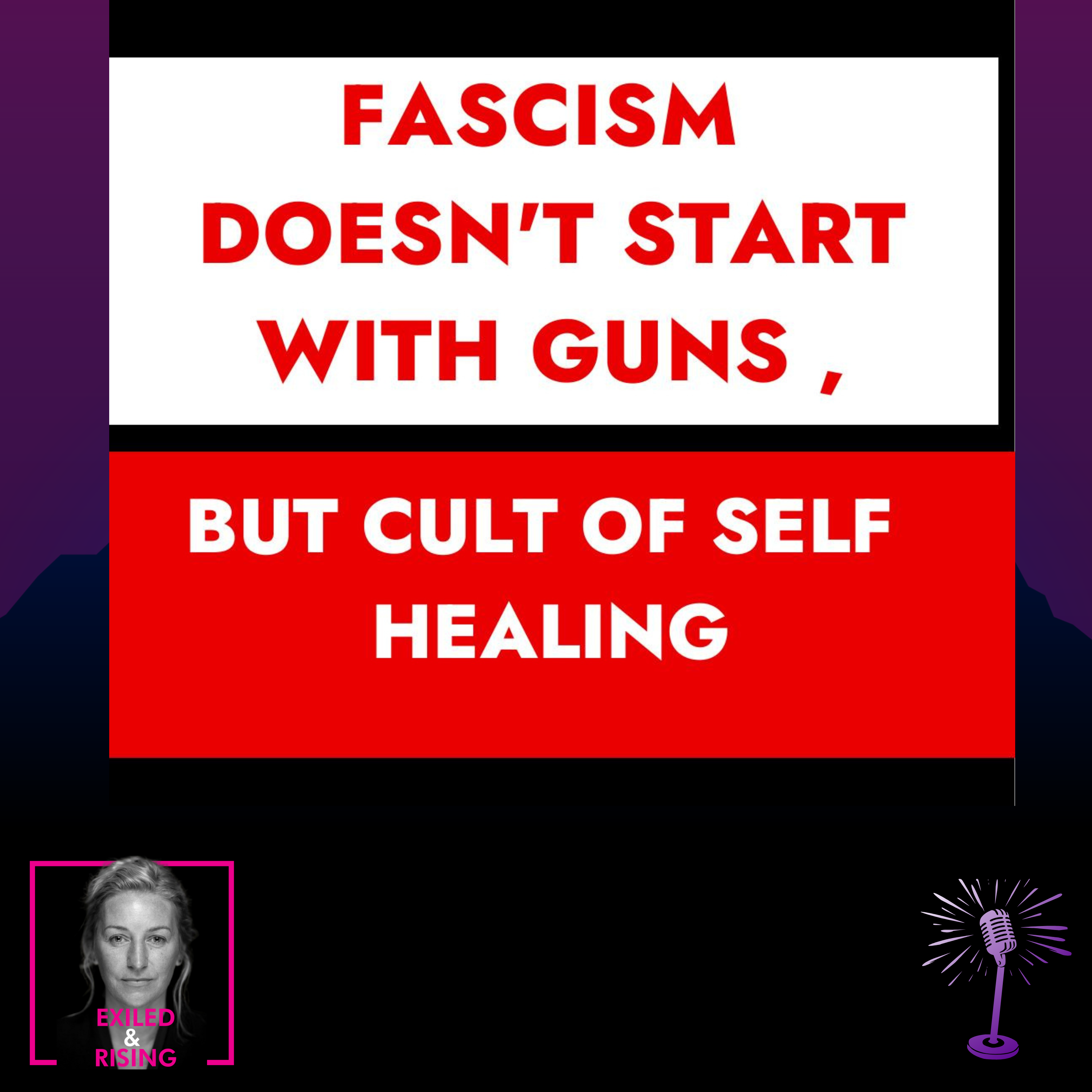Episode Transcript
[00:00:02] Speaker A: We with the trauma are the most, the most difficult people when it comes to trusting someone. We don't trust anyone.
That's a luxury.
They will not be abused. They will not be embarrassed. They will not be ashamed. They will not be devalued. They will not be minimized.
They will not be ostracized, cut out.
They will not be exiled.
[00:00:31] Speaker B: Okay?
[00:00:33] Speaker A: Do you see the difference?
So you need to get to know history of your own body, history of your own parents. So history of your own parents.
[00:00:45] Speaker B: Okay?
[00:00:48] Speaker A: It's monumental difference.
And you need to own your story.
[00:00:53] Speaker C: No one else. No one else.
No one else.
[00:00:59] Speaker A: There is no running toward the trauma. And PTSD mind will never allow you to run toward anyone or anything.
Before you can run towards someone or something, you first need to have a safe person or space to run toward in that refuge, to that safe haven where you will be able to rest and feel protected.
Death does not exist in trauma.
In trauma, there has never been a safe person or a place you could run to.
And that possibility can't even exist in its realm.
So many people, when ask me, oh, do I have a trauma?
Think about this.
Not everyone who is saying, nowadays, I have a trauma have trauma, they don't. They're using this more as a personal branding story because it's just the thing you need to do nowadays.
But, uh, you will know. You will know if you had trauma or if you're living if you have complex ptsd.
Your system, your body, your biology never had that someone to run towards.
PTSD body, complex trauma is not running toward. It's not easily moving toward because it didn't have that space.
So that's reality for many.
For many.
[00:03:21] Speaker B: Okay?
[00:03:23] Speaker A: If you had one person who was your protector, your safe person, that doesn't mean you didn't have a trauma.
But the system wasn't so dysregulated.
The trauma brain lives in a state of always running away, ah, from something or someone.
The mind and body of trauma are defined by running away from danger and not over something safe.
So notice that this is a big sign.
Am I, uh, running away from or towards someone?
The trauma mind doesn't trust people.
We, with the trauma are the most, the most difficult people when it comes to trusting someone. We don't trust anyone.
That's, um, a luxury.
And that's also the learning, right? We want to trust someone. We want to feel that bond, we want to feel that safety.
But the history is preventing us of trusting anyone. We can trust our dog, right?
We can trust our animals more Than people.
And I'm reading this. This is the second book, the Trauma We Don't Talk about page 66 for all of you in a book club.
The mind and body of ah, trauma are defined by running away from danger and not towards something safe.
The trauma mind doesn't trust people.
It cannot believe there is a safe person to run toward because that safe person doesn't exist in the first place and never did.
And there is no safe destination to run toward either.
Okay, think about two things for therapists, okay? When you're working with your clients, you need to locate a person, a person and GPS location.
[00:06:20] Speaker B: Okay?
[00:06:21] Speaker A: Always keep that in mind where you're moving your client from unsafe person from unsafe location towards someone safe towards. And where is that location safe?
Number one thing here. Start with your body. Okay? Safe person, safe location before moving to anyone else.
Or you can tell this to your therapist, uh, to speed up your recovery.
The trauma mind is always being chased by a desperate hope that you will reach safety by running from, um, shame, isolation, insults, anxiety, mistreatment, pain, poverty, discrimination, displacement, war, genocide.
[00:07:34] Speaker B: Injustice, um.
[00:07:37] Speaker A: You'Re running from someone, you're running from some threat to safety, never towards someone to feel safe.
So this is the big difference.
Recognize how your system, your body. Okay, I'm Somatic therapist for PTSD and trauma Recovery for you who don't know.
And I'm a founder of Somatic Trauma Recovery Center.
This is where I teach.
This is, this is the biggest, biggest, biggest AI, if you will. This is your biggest AI. This is your wisdom, your intelligence. So trust your body. Develop those skills of observing your patterns because this is very important here.
Okay?
So this is the big here, you're running from some threat to safety.
Never tolerate someone to feel safe.
So how that looks is as you are. You have been chased all the time.
Someone is observing you.
That's the quality of the feeling that someone is behind your back and you want to run away from that person or people.
That's the quality of your body. Okay, how do we reset?
Check in the links below.
One distilled lesson.
Not 500 hours.
One hour. One hour, 15 minutes. Top to work to coming back to regulated state.
[00:09:34] Speaker B: Okay.
[00:09:39] Speaker A: So you're running from some threat to safety.
But here's the thing, that safety is never safe.
And you can spend your whole life running from chasing that next project, chasing that next goal, chasing that next person.
So it's very different from being driven and having your, uh, being ambitious.
This is always if.
It's almost like if I don't do this.
Something bad will happen.
I ah, will uh, move down to my depression.
[00:10:30] Speaker B: Okay.
[00:10:34] Speaker A: That running away to feel safe comes from a desperate hope that there is a place where only peace and harmony exist.
A place of rest, nothing else.
It is a place where the push and pull of life ceases and there is only the constant oasis of equilibrium.
It is not a place where a specific safe human exists to embrace you and hold you.
But what we have in our mind is.
When I get there, tag this. Tag this.
Uh, when I get there, there, there.
And that deer is never close to you.
Can you.
That reality is that there isn't a constant safe place.
Life is all about negative, neutral and positive experiences.
And it's so hard for trauma bodies to. To get that realization, to live in that space.
How could you get there when you need to run from.
In order to survive all the time, all your life?
That is why trauma is so tremendously exhausting.
It's exhausting because you're always running away from people without trauma. If there is any, okay, privileged people, cocooned people, okay?
Oh, they are running toward. They know they will belong.
They will not be ostracized. They will not be cut out. They will not be deported.
They will not be abused, they will not be embarrassed, they will not be ashamed. They will not be devalued, they will not be minimized.
They will not be ostracized, cut out.
They will not be exiled.
[00:13:23] Speaker B: Okay?
[00:13:25] Speaker A: Do you see the difference?
So you need to get to know history of your own body, history of your own parents. So history of your own parents.
[00:13:37] Speaker B: Okay?
[00:13:40] Speaker A: It's monumental difference.
And you need to own your story.
[00:13:45] Speaker C: No one else. No one else.
No one else.
[00:13:51] Speaker B: Okay?
[00:14:00] Speaker A: What you can do is to find peace and safety in micro moments of your day.
You will find them, um, when you're not running from pain, but running toward noticeable safety in your body.
So this is what I teach.
Lesson is below in the show notes in your body on somatic level.
[00:14:35] Speaker B: Okay?
[00:14:36] Speaker A: It's experiential lesson where you need to experience that. It needs to be your experience, your environment and thoughts.
Notice one molecule of safety in your body.
One pleasant thought in your mind. Just one pleasant thought in your mind.
One tiny beam of light in your.
[00:15:11] Speaker B: Room.
[00:15:14] Speaker A: Sun on your cheeks, moment of safety.
You're not running from anyone in that moment. So we will work on that.
Harmony and peace can exist in your world when you build and gain access to safety.
And when you stop running away from your pain.
And harmony and peace are uh, not constant states and never will be Life is about building resilience so that you can face turmoil when it happens.
And you know you can do that. You did it many times.
And also, I don't like how this word, uh, I think I'll do the second edit of, uh, my book.
Resilience is so abused now.
It was a good word. Same as trauma.
It's one of those now buzzwords, so overused and abused on social media and by just fake influencers, people who think they know what the trauma is all about.
Mm. Mm.
But life is about building that capacities, that confidence in your soma, in your body.
And you know, you. You did your trauma. Um, uh, you are still doing it. And you will.
You will. That's. That's the life.
That's the life.
[00:17:14] Speaker B: Okay.
[00:17:17] Speaker A: But reshifting and how we're applying this is not about.
I'm on a constant chase to something else. Because if I pause, pausing is actually. Pausing is traumatizing for people with PTSD and complex trauma.
Right.
Pausing is not easy.
Pausing can really be one of the biggest triggers.
Many people cannot meditate and many, many people who are teaching meditation are for people who have trauma, complex trauma are saying meditate with eyes, uh, closed. Are you freaking kidding me? Closed eyes with hypervigilant state. Someone who is coming from war and genocide, soldiers, first responders, please talk about that.
I couldn't close my eyes for decade after the war.
Keep your eyes open. Hell no.
How is that safe for your body when your body is constantly chasing and chasing towards safety and running away from a bullet.
But what your capacity is, and absolutely, I see this all the time, the capacity is the nervous system has the best wisdom.
AI cannot provide that wisdom.
Your body, your soma, can.
So when you build that capacities of expanding that space of safety m.
By being at one place and noticing when you want to run away from it and just pulling back and noticing there are many good things in this moment not to fake those good things. Okay? There is no faking. You cannot fake your nervous system.
But there's the way how you can implement that.
Page 66.
There is no running toward.
And yes, it will be running toward with full capacities.
Desire, joy, confidence.
I am Anna Mild.
This is excellent. Rising.
Subscribe Follow check all the links in the show notes and until next time, Much care.
Much care.



